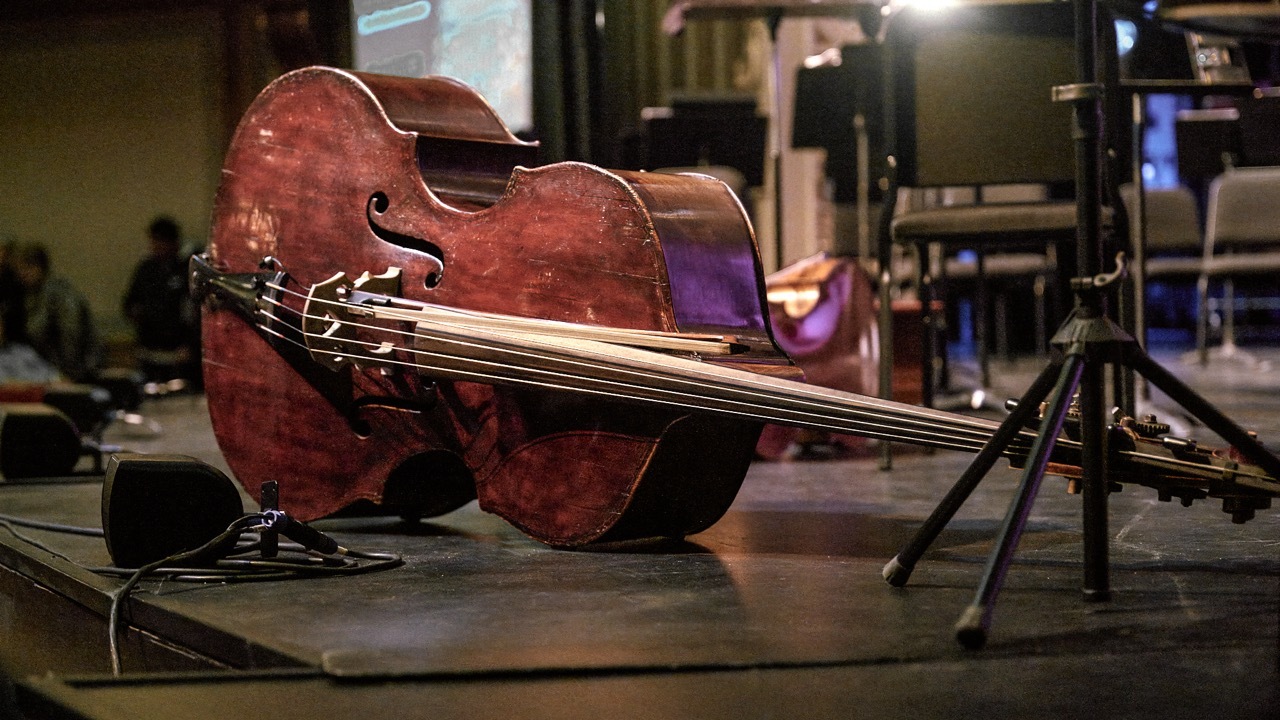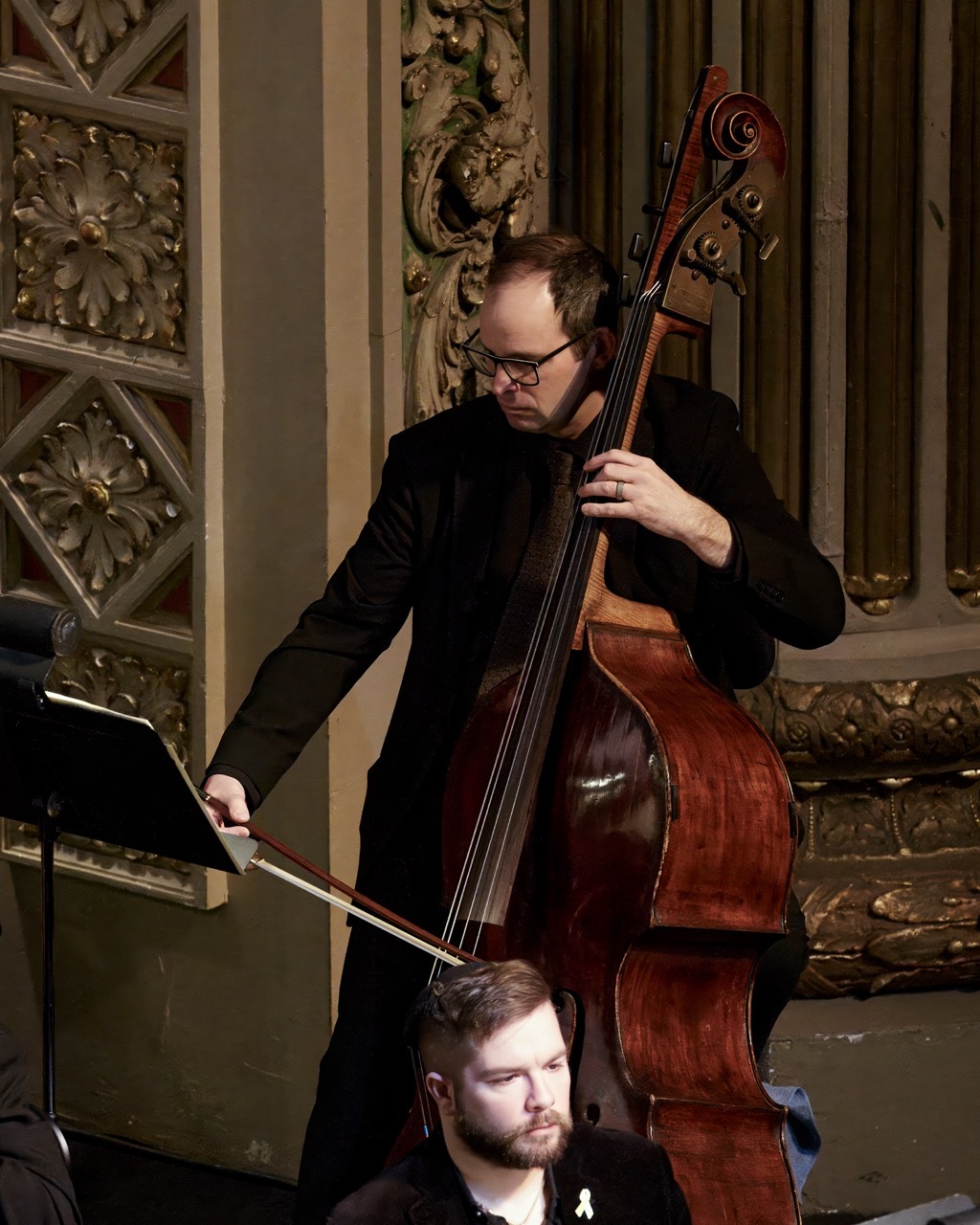The Double Bass: From Foundation to Melody


The double bass (also known as upright bass or contrabass) is the largest string instrument in the orchestra, towering over its smaller string relatives: the violin, viola, and cello. Typically measuring around six feet in length, the double bass produces the lowest sounds in the string section, making it a foundational voice in shaping the overall sound of the ensemble. It is a versatile instrument capable of both anchoring the harmonic structure of a piece and delivering melodies with rich, resonant tones that resonate deeply with audiences.
The bass has four strings, tuned in fourths (E, A, D, G), and can be played with either a bow or plucked with the fingers (a technique applicable to all strings called pizzicato). The bow used for the double bass is longer and heavier than those used for the other string instruments, allowing the player to produce a full, powerful sound. The instrument is made from wood, with a carved top and back, and can weigh anywhere from 18 to 25 pounds depending on its size and materials. Basses are standard members in many other genres including jazz, blues, rock and roll, bluegrass, and more.

The double bass section in the orchestra plays a pivotal role, not only providing the harmonic foundation but also adding texture and emotional resonance to the overall sound. Basses work alongside the percussion and brass sections to provide the rhythmic and harmonic backbone. It often plays the lowest notes, laying the canvas for harmonic structure to be added upon by the cellos and violas. But the role of the double bass goes far beyond simply anchoring the sound; it can carry melodies, evoke emotions, and add layers of depth to orchestral works.
The instrument's usual deep and resonant tone creates a sense of power and gravitas, but it can also produce light, agile passages when required. Composers have increasingly recognized the double bass’s ability to shift from a foundational role to a melodic one, allowing the instrument to shine in its own right. Over time, the double bass has moved from an occasional, supporting role to a key player in symphonic writing, with composers like Beethoven, Mahler, and Stravinsky featuring the instrument in increasingly prominent ways.

A perfect example of the double bass stepping into a soloistic role is in Mahler’s Symphony No. 1, which will be performed by the Yakima Symphony Orchestra on May 31. This symphony contains a particularly iconic moment in the third movement, where the double bass takes the spotlight with a memorable solo.
In this movement, Mahler cleverly arranges the well-known folk tune Frère Jacques as a round (a compositional technique where multiple voices sing the same melody, but starting at different times, creating a layered, harmonious effect). What makes this melody even more interesting is the way Mahler places the tune in a minor key instead of the traditional major key, creating a striking contrast with the second theme to follow. This change in tonality shifts the mood, turning the familiar melody into something ominous and foreboding.
At the helm of this bass solo will be our Principal Double Bass, Bren Plummer. Bren's skill and artistry will bring this poignant moment to life, showcasing the full melodic potential of the instrument. The bass's unique ability to evoke deep emotions will shine through in this solo, offering a beautiful and stirring contrast to the rest of the symphony.
This moment is a true testament to Mahler's genius in utilizing the double bass as more than just a harmonic foundation. It highlights the instrument's melodic capabilities and its ability to shape the emotional tone of a piece. Under Bren's expert hands, the solo will be a performance that is both technically impressive and emotionally resonant, capturing the true essence of Mahler’s work.

The double bass is not just the largest string instrument in the orchestra—it is a powerful, expressive voice that plays a fundamental role in shaping the sound and emotional depth of orchestral music. From providing harmonic support to carrying memorable melodies, the double bass has evolved into an essential voice in the orchestra.
Here at the Yakima Symphony Orchestra, we are proud to have Bren Plummer as our Principal Bass. Bren is a freelance double bassist and composer from Seattle, Washington. Known as a strong player and insightful interpreter of both jazz and classical music, he is a member of two professional orchestras in Washington state and a regular contributor to jazz venues and nightclubs all over the Seattle area. Bren has performed at numerous festivals including the Montreux Jazz festival in Switzerland, the North Sea Jazz Festival in the Netherlands, The Round Top Festival in Texas, Jazz at Port Townsend in Washington State, and the Verbier Music Festival in Verbier, Switzerland. Bren Plummer's compositions have been performed by orchestras in the United States and Europe at concert halls such as the Salle-Pleyel in Paris and the Delibes Center for Music in Valladolid, Spain.
On May 31, you will have the opportunity to experience the full range of the double bass's capabilities when Bren Plummer performs the iconic solo in Mahler's Symphony No. 1. This is a moment not to be missed, as it showcases the emotional depth and richness that the double bass can bring to Mahler’s epic symphony. Come and witness the beauty of the double bass in this unforgettable performance. We hope to see you there!
–Vanessa Moss